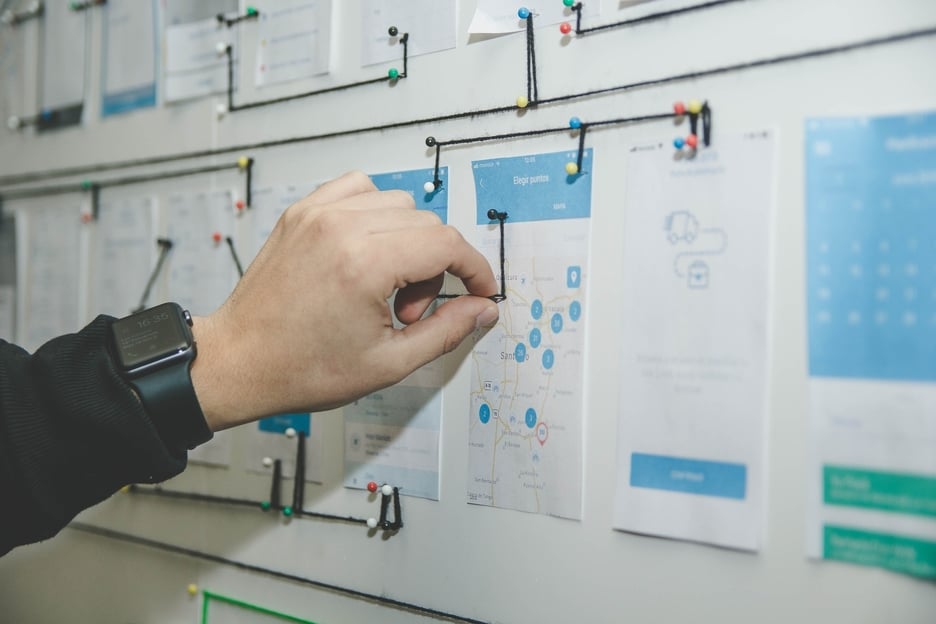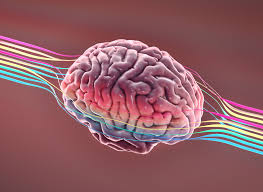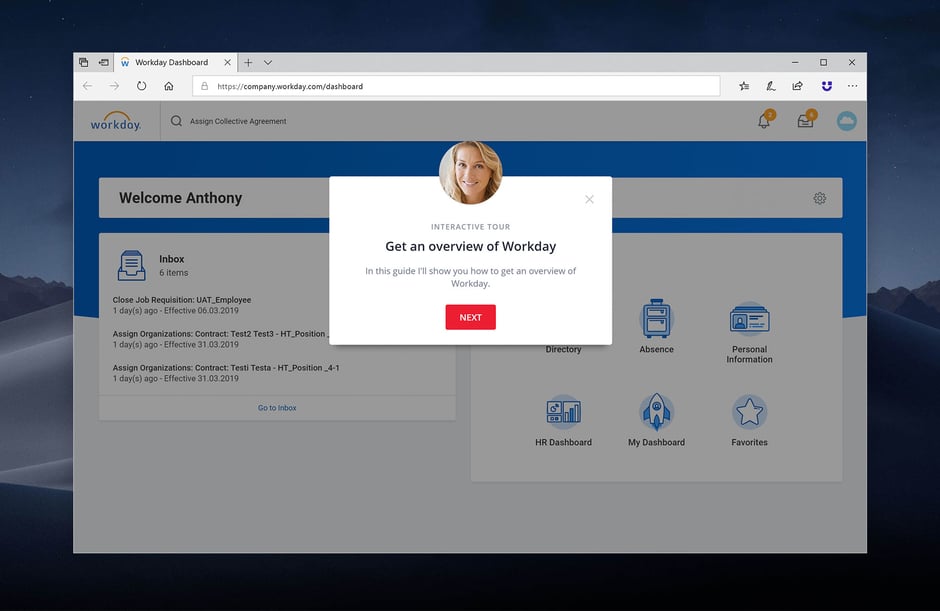Hello!
A few weeks ago, we met with a friend of us who happens to be a great marketer at a brand-new SaaS startup. We sometimes meet to exchange ideas.
He told me all about the great campaign he and his team developed. A well-designed and extremely creative campaign.
He mentioned that they had spent days brainstorming ideas for this lead generation campaign and that it took over a month of work to prepare all the assets. We were obviously eager to know all the details, and we couldn’t wait to get some insights and figures.
Did it work? How well did it actually work? How many trials did they generate? What was the return on investment?
 The more he told us about the campaign, the more we felt sure that the campaign was a success.
The more he told us about the campaign, the more we felt sure that the campaign was a success.
And, as expected, he was really proud to share more data about the number of leads and cost per lead. We was impressed with those numbers and mentioned that it was time to order a drink to celebrate.
But he told me to wait.
He told me there really wasn’t much to celebrate. They invested a lot of time and money in the campaign and, sure, they managed to attract a lot of trial users. But the problem was that in the end, they only generated a handful of paying customers.
The company he works for is quite new, and they don’t really have in-product analytics. However, it’s relatively clear from the data they could collect in their backend that most of the users weren’t very active after signing up and eventually lost interest in the application altogether.
We obviously smiled. After years spent analyzing onboarding and activation data, we knew exactly what he was talking about.
The Importance of Activation in Customer Onboarding
The problem is well known. A poorly designed onboarding process can quickly lead to churn. A great way to improve your customer onboarding process is by sending personalized, educational, welcoming and insightful emails.
 Think about it. We’re all busy with millions of tasks and responsibilities. Slack messages, emails, deadlines, reporting, analytics, planning, execution…
Think about it. We’re all busy with millions of tasks and responsibilities. Slack messages, emails, deadlines, reporting, analytics, planning, execution…
We take a coffee break and check Instagram in the meantime. Suddenly our attention is drawn to a super cool sponsored video and we check the ad. It’s a new software tool that seems interesting.
We check the landing page and more or less understand what problems we could solve with it. So, we decide to give it a go.
It’s a free trial. Nothing to lose here (which, paradoxically, is the first of a series of problems connected to activation. More on that in a minute.).
We create an account and start playing around with the application. In the meantime, meetings and a couple of urgent issues take priority and then it’s time to go home.
The following day, we need to catch up on our correspondence and work. We may check the new application again and immediately feel as though we need to start from the beginning. After setting everything up, we finally get started with the free trial until we get stuck and are forced to look for support.
We start reading a couple of documents and go back to the application … only to be distracted again because Simon just messed something up in the CRM. (And yes, there’s a Simon in every company!)
 Long story short, after a few days, we only get to scratch the surface without actually trying all the useful advanced features of the new application.
Long story short, after a few days, we only get to scratch the surface without actually trying all the useful advanced features of the new application.
We don’t get to see the full value and soon lose interest once the novelty effect is over. And right after the weekend, we don’t even remember to log in. So, by the time we receive an email that mentions that the trial period is over, we sometimes don’t even remember signing up in the first place.
So, for you, this means that all your marketing and sales efforts converge into the single moment when the user signs up for an account. That’s the deciding stage that should convert interest and desire into action.
As a product marketer, you know how hard and expensive it is to attract prospects to your product and convince them to invest their precious time in testing it.
The problem is, though, that you can’t have their full attention for ever. Think about how difficult it is to entice your audience to keep reading an article or potential investors to listen to your entire pitch - it's the same concept when trying to keep users engaged while they test your application. It's quite a tall order.
Users expect immediate results, and it’s up to you to create a sense of urgency while, at the same time, creating a perfect user flow that makes users want to return to your application to get more out of it.
You only have one chance. If a user doesn’t quickly become an expert in your application, they’ll never see the true potential of your solution and will become one of the many dormant accounts you actually invested money in.
Seal With a Limited Attention Span
You know everything about your product. And for you, your solution is extremely intuitive, easy, and so wonderfully useful.
You think that the benefits are extremely obvious, and you probably think that everybody would agree with you on the fact that your solution is the best way to tackle a specific problem.
 But the reality is that for new users, your software is not intuitive, it's definitely not easy to understand, and it's not particularly memorable. It might be useful, but they still managed to survive without it for their entire life, and they already know at least 10 ways to tackle the problem your solution addresses.
But the reality is that for new users, your software is not intuitive, it's definitely not easy to understand, and it's not particularly memorable. It might be useful, but they still managed to survive without it for their entire life, and they already know at least 10 ways to tackle the problem your solution addresses.
Unless you manage to transfer all your knowledge into you trial users’ minds and turn them into experts in a very short time, they’ll never actually care enough about you or your product to keep investing time in it.
Your world might revolve around your product, but other people have a never-ending list of other priorities and couldn’t care less.
Well ... unless you give them reasons to care!
Onboarding is key to customer retention and you want to use the best practices for mzaintaining a low client churn rate. Here are some important triggers that can lead to higher engagement during the onboarding phase.
Require Some Form of Commitment
We all know how great it is to land on a SaaS website and be able to test a product right away.
Having immediate access to a free trial without too much effort - such as simply signing in with a whatsoever social media account - is awesome.
From the user’s perspective, there’s nothing better than going from a landing page directly into the product and start exploring all its features.
But for you, this might not be the optimal case.
Let’s be honest. We all tend to appreciate something more if we have worked hard to get it. A great vacation feels even more special if we feel we deserved it after a very productive period at work. Saving a little bit of money every month to finally go into a store to buy something we really like feels a lot more special than receiving it as a present.
I’m not saying users necessarily have to work hard to finally get to use your product, but without any commitment, you can’t convey any sense of urgency or occasion.
Companies that offer direct access to a free trial without any obstacles witness a huge amount of sign ups, but, truthfully, engagement is usually quite low and so is the conversion rate.
 This is particularly true for freemium products> Users know that they have nothing to lose and might decide to postpone their exploration. This might lead to quickly de-prioritizing the project altogether and eventually to lots of ghost accounts.
This is particularly true for freemium products> Users know that they have nothing to lose and might decide to postpone their exploration. This might lead to quickly de-prioritizing the project altogether and eventually to lots of ghost accounts.
To partially obviate the problem, some companies offer a free trial but ask users to enter their credit card information.
This simple step dramatically reduces the number of sign ups, but because of the initial commitment, users feel committed to make the best of their trial and tend to be more active. This, in turn, translates into a higher conversion rate.
If forcing users to enter payment information is perceived as bad user experience, and if you think this might deteriorate the sense of trust that the users perceive, another solution is asking users to go through a demo call first.
During this call, you can qualify the lead and you can also gather valuable information about goals and expectations to present the best use case and approach to your prospect.
Additionally, if a new user is willing to invest their time in discovering more about your solution, they also display a strong buying intent. And because of the initial investment, they’ll be less likely to waste time.
Other forms of commitment that might push engagement include providing more information (time investment), setting up integrations (to quickly become part of the standard ecosystem users work in), or inviting more people to join the team in the product.
Provide Purpose and Guidance
The first rule of engagement is clarity.
Users need to know WHY (outcome and benefits) a certain action is required and WHAT exactly they need to do to accomplish it and HOW.
Action is triggered when users feel motivated (they know that the outcome is valuable), when they know how to accomplish a specific task, and when they’re prompted to take action.
 Onboarding tours and tooltips might delay interaction, but on-screen interactive guidance and onboarding checklists lead directly to higher engagement since users have a list of tasks to accomplish, know what the reward is going to be, and are guided step-by-step to eliminate uncertainty.
Onboarding tours and tooltips might delay interaction, but on-screen interactive guidance and onboarding checklists lead directly to higher engagement since users have a list of tasks to accomplish, know what the reward is going to be, and are guided step-by-step to eliminate uncertainty.
Onboarding users means taking control of their discovery journey and sending them on a mission with specific cues and objectives.
www.gusto.com, for example, provides users with a clear checklist that creates a map of desired outcomes.
Users simply need to follow their progress through the list to know what they need to do. This works even better if you automate the checklist with interactive guidance.
Clear instructions lead to self-sufficiency. And according to the self-determination theory, this leads to intrinsic motivation. Random exploration, on the other hand, might lead to very low engagement.
Gamification
And while your users accomplish all their onboarding tasks, you need to direct their attention from one step to the other.
For this purpose, in-product gamification has proven to be extremely useful. Showing progress, rewarding users (with badges, GIFs, congrats emails, or access to additional features), scaffolding, creating a healthy balance between exploration and guidance, recognition, social elements, and other gamification elements all help drive engagement.
Think of Google and how they manage to boost engagement for reviews and contributions. We all enjoy that sense of achievement we feel when we see our profile go from “rookie” to “expert”. We enjoy titles and social proof. Becoming an expert feels so much better if we can prove it and we are recognized as such.
Another good example? Fitbit or similar products. They drive engagement by helping users build up their profile and monitor goal progress and by allowing them to share results.
Expectation Management
It’s hard to fall in love with a marketing automation tool that promises to increase efficiency by 0.5%.
But it’s also demotivating to try out an application that promises a 300% increase while we see little to nothing happening while we test it out.
As mentioned a few times, engagement is linked to motivation. And motivation is linked to expectations.
Look at the team collaboration app ProofHub. They state and even highlight all the benefits of their solution directly on their homepage. That’s a pledge placed right at the very beginning of the customer journey. The user knows what to expect.
You need to provide clarity to your users at every stage, and you achieve this through promotional messages, sales calls, copy, onboarding, and customer success calls.
Keep in mind that the user always needs to know two pieces of information:
a) What they can expect to achieve with your solution
b) How long (and how much effort) it will take
Some customer success solutions like Amity are very clear with their customers. They promise great results, of course, but don’t say that their software will have immediate effects overnight. That’s because a customer success solution doesn’t work like that.
 Waiting is not a problem if we know how long we have to wait. Uncertainty is what kills motivation.
Waiting is not a problem if we know how long we have to wait. Uncertainty is what kills motivation.
When you’re at the train station or bus stop, you usually see a sign that says how long you’ll have to wait. The same when you wait for your furniture at IKEA or when you order food on Deliveroo. Waiting ten minutes at the bus stop feels like an eternity when we don’t know when the next bus will come. The same time span goes by really quickly when we know how long we need to wait.
Remind users of their steps. Show them that they have already made progress (with in-product messages or emails). Consistently tell them what they need to do to achieve their goals.
Start showing progress from the very beginning and be clear with expectations.
If you promise immediate results and your users see nothing has changed, they’ll soon lose interest.
The Right Timing
When it comes to messaging, timing is everything.
It’s important to monitor in-product users’ behavior to properly time messages that encourage completion or reward them for accomplishing specific goals. Buffer, for example, sends you messages to celebrate your successes on social media while also reminding you of how useful their service is.
The behavior of your users needs to trigger in-product messages, emails, or contextual performance support to maintain a high level of attention and focus, lead users from one step to the other, and continuously remind them of their quick wins and the value your solution.
 The more personalized your communication is the better the results. A user who feels personally addressed will be more likely to invest time in becoming an expert in your application.
The more personalized your communication is the better the results. A user who feels personally addressed will be more likely to invest time in becoming an expert in your application.
You need to prove that you understand what your user is trying to achieve and that you know exactly how to support them.
Direct communication is very effective with active users. It helps maintain a constant level of engagement. At the same time, though, it is also important to trigger specific communication when you spot dormant accounts. Users who don’t accomplish all their onboarding tasks within the first 48 hours are unlikely to convert into customers.
Your task here is two-fold: You need to monitor engagement and promptly reward users who are very active, and at the same time, try to re-activate those accounts that aren’t engaging with your products at a very early stage.
Micro Achievements and “Aha! Moments”
If you know it might take time for users to achieve their goals, try to create milestones and micro achievements along the way.
The ultimate goal of your solution might be setting up an AI-driven targeting automation in your CRM after collecting a certain amount of data. This might require users to work with your product for a certain period of time before the system starts taking control.
To keep users motivated through the journey, you can create a series of micro goals linked to immediate results (for example, immediately identifying and isolating inactive contacts). Keep score and show results. Show users you’re preparing the journey for them and that you’re traveling along.
Every success along the way will increase motivation and engagement.
Personalize the Journey
 Creating a single onboarding journey for every user persona might be counter-productive for some software solutions.
Creating a single onboarding journey for every user persona might be counter-productive for some software solutions.
If your product has multiple use cases and if you have different customer personas, their desired outcome might vary.
It’s important to segment users from the very beginning and create a personalized user experience that leads to success.
A good example here is Wave, the accounting software solution, which asks users from the very beginning what they want to accomplish. Users choose one of the three options they present and their customized onboarding journey begins.
Novelty
We tend to become bored with and get used to a new situation quickly. Try to add elements of fun to your onboarding process and direct the attention of your users to new features (but don’t expose new users to advanced features from the beginning as this can soon become frustrating) and new components.
Show users what you’re doing for them behind the scenes with in-app messages and emails. Present new features, explain what you’re up to and why.
Plus, involving users in your roadmap is a good gamification element you can use to reward highly active users and create a community that cares about your product!
Map, Monitor, Intervene
 Finally, remember to map the entire onboarding journey for different customer personas across all the channels you use, from micro copy, to emails, interactive walkthroughs, in-app messages, and so on.
Finally, remember to map the entire onboarding journey for different customer personas across all the channels you use, from micro copy, to emails, interactive walkthroughs, in-app messages, and so on.
Monitor engagement at different stages and identify those stages where motivation seems to decrease.
Ideally, you should have a cross-functional team of experts (from product, UX, marketing, customer success, sales…) who can get together and brainstorm ideas on how to intervene and improve the current situation.
The reward: Higher engagement, conversion, and eventually retention rate.
Keep your users engaged by redesigning your onboarding journey
The onboarding phase is the very beginning of the relationship between your users and your product. You only have one shot to make a good impression!
And as far as our friend (the marketer we were telling you about is concerned), I’m glad to tell you that his company has started the redesign process of their onboarding journey and with just a few initial tweaks they already managed to see some promising results.
Thank you!
Subscribe to our newsletter! Join us on social networks!
See you






